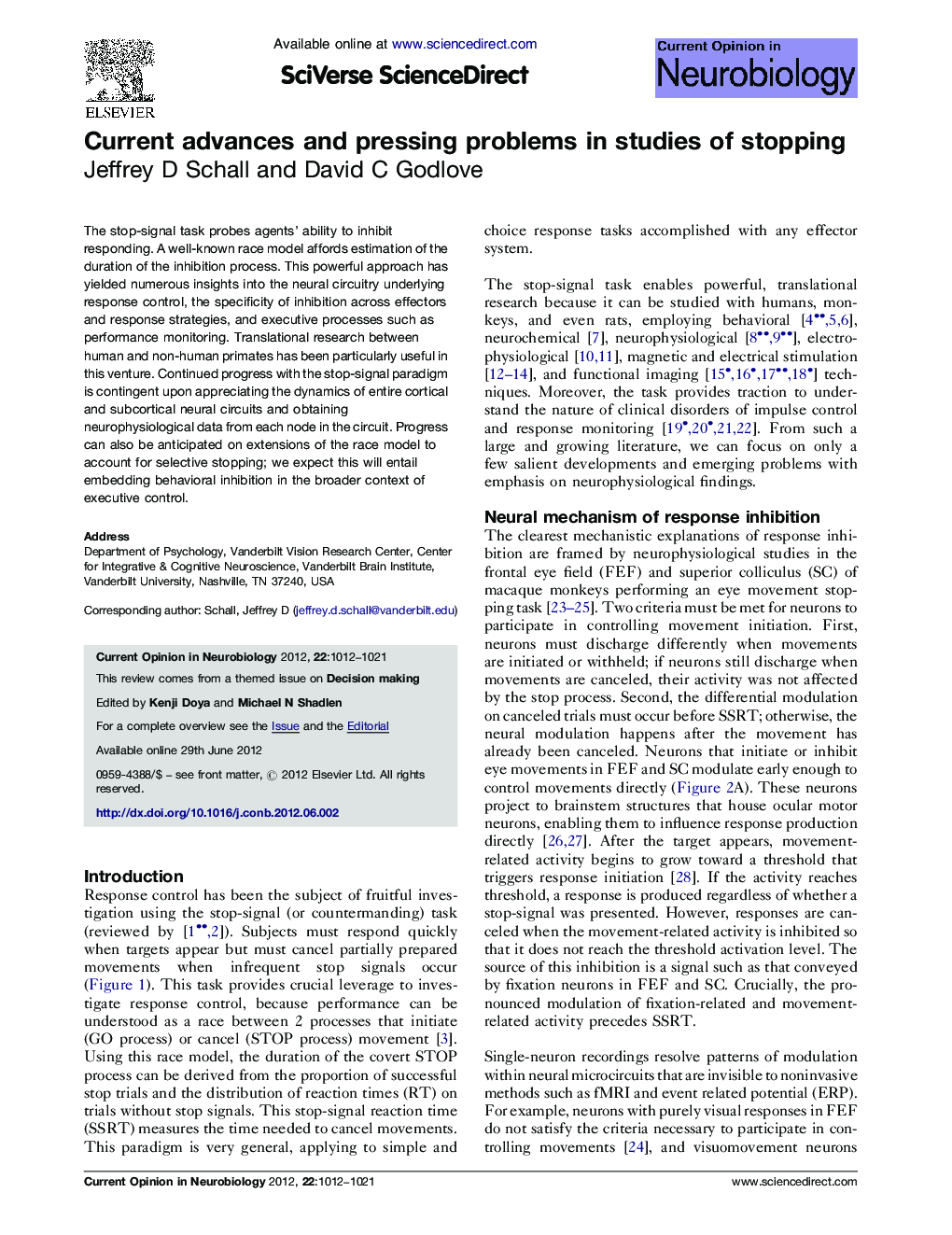| Article ID | Journal | Published Year | Pages | File Type |
|---|---|---|---|---|
| 6267266 | Current Opinion in Neurobiology | 2012 | 10 Pages |
The stop-signal task probes agents' ability to inhibit responding. A well-known race model affords estimation of the duration of the inhibition process. This powerful approach has yielded numerous insights into the neural circuitry underlying response control, the specificity of inhibition across effectors and response strategies, and executive processes such as performance monitoring. Translational research between human and non-human primates has been particularly useful in this venture. Continued progress with the stop-signal paradigm is contingent upon appreciating the dynamics of entire cortical and subcortical neural circuits and obtaining neurophysiological data from each node in the circuit. Progress can also be anticipated on extensions of the race model to account for selective stopping; we expect this will entail embedding behavioral inhibition in the broader context of executive control.
⺠The stop-signal task probes response inhibition in multiple effector systems and species. ⺠Neurophysiological studies in monkeys demonstrate mechanisms for stopping in motor structures. ⺠Clinical and imaging studies in humans indicate complex circuits accomplishing stopping. ⺠Differences in stopping mechanisms across effectors and task conditions are under active study. ⺠Stop-signal studies afford effective investigation of executive control.
